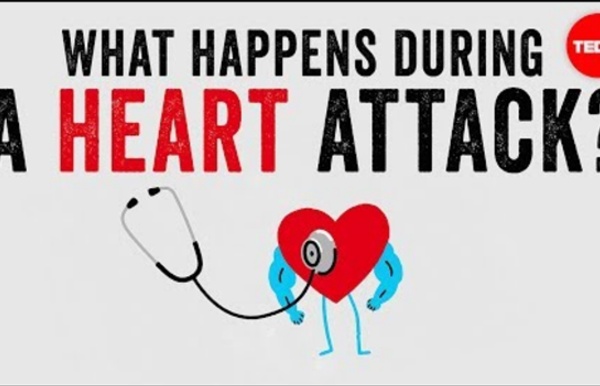



http://www.youtube.com/watch?v=3_PYnWVoUzM
Related: Health body • Human body • Medical SpecialistsWhy do blood types matter? - Natalie S. Hodge As with most topics in human genetics, blood type is more complicated than it appears on the surface. There are other human blood groups that are less common than the ABO blood group. For example, the Bombay Phenotype is a recessive condition in which the precursor of the A or B antigen, the H antigen, is not made. It occurs in about 1 in 10,000 people in India and 1 in million people in Europe. Even though someone inherits the alleles for an A or a B antigen, they can’t make these antigens if they don’t have the instructions on HOW to make them. For more info on the Bombay phenotype, visit this site.
Respiratory system diseases Pneumoconiosis – literally, “an abnormal condition of dust in the lungs.” A generic name for conditions where toxic particles become trapped in the lungs and cause symptoms and disability such a “black lung” or “miner’s lung” disease. Terms specific to the particulate matter may be given such as asbestosis. Epistaxis – want a fancier name for a “nosebleed?” You got it! How do your kidneys work? - Emma Bryce Kidneys play a vital role in your body. Why are kidneys so important? Visit the National Kidney Foundation and find out more details about hypertension, diabetes and other ways they can become damaged. Click this link and find out how to keep those kidneys healthy.
16 Muscle Diseases and Disorders You Need to Know Muscular system diseases affect one of the most important structures in the human body: muscle. Our muscles produce the force necessary to help us move and function in the world. Without it, we would be bound to a single spot for the rest of our lives. Diseases of the muscular system can affect various aspects of this type of soft tissue, which there are many different types of. Each is separate and distinct, all controlled by our central nervous symptom in some capacity. Muscular system anatomy
How does your brain respond to pain? - Karen D. Davis Some people take aspirin or ibuprofen to treat everyday aches and pains, but how exactly do the different classes of pain relievers work? Learn about the basic physiology of how humans experience pain, and the mechanics of the medicines we've invented to block or circumvent that discomfort. Interested in the theories of pain, dating from the 17th century until modern times? See this article. Interested in how individual variability in brain circuits are related to mind-wandering from pain? See the original article and discussions in the scientific community Pain Research Forum and in the Health News from NPR.
Muscle, Bone & Skeletal Diseases The musculoskeletal system consists of the body's bones, muscles, tendons, ligaments, joints, and cartilage. Back Pain Back pain is one of the most common medical problems in the United States. How your muscular system works - Emma Bryce Every time we blink, take a walk, or lift something heavy, we have the muscular system to thank for enabling us to move. It’s such a big part of daily life, and so physically vast, that it helps to have an overview of how this system works. This page from the National Institutes of Health provides a useful guide to the muscular system and the muscles’ various roles. And this helpful interactive chart gives you a front and back view of human muscles, grouped by type. Let’s zoom in and take a closer look at the different muscle types.
Asthma Overview Asthma is a condition in which your airways narrow and swell and produce extra mucus. This can make breathing difficult and trigger coughing, wheezing and shortness of breath. For some people, asthma is a minor nuisance. For others, it can be a major problem that interferes with daily activities and may lead to a life-threatening asthma attack. Asthma can't be cured, but its symptoms can be controlled. How the heart actually pumps blood - Edmond Hui The technique of demonstrating the pumping mechanism of the heart was first shown in public in this TEDx Talk.The detailed scientific description of the technique was published in the European journal, Science in School. There is a beautiful app from Touch Press by Martin Clayton on Leonardo Da Vinci’s anatomical studies, explaining the difficulties he had trying to understand the heart.This book by Thomas Wright describes the discovery of circulation by William Harvey, a hundred years after Leonardo Da Vinci. Harvey was also the first to prove that the heart is a pump, but he did it by lethal and gory demonstrations on live dogs. Many animals would have been saved if he had discovered this technique!